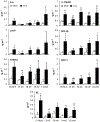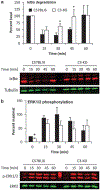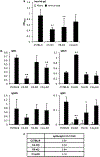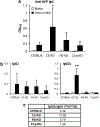Complex interactions with several arms of the complement system dictate innate and humoral immunity to adenoviral vectors
- PMID: 18615115
- PMCID: PMC11112971
- DOI: 10.1038/gt.2008.114
Complex interactions with several arms of the complement system dictate innate and humoral immunity to adenoviral vectors
Abstract
The complement system is known to play critical roles in pathogen identification, initiation of innate immune responses and facilitation of adaptive immune responses. Several studies have suggested that recombinant adenoviruses (rAds) interact with proteins of the complement system within minutes of administration. In this study, we assessed the roles of the alternative (Factor B), classical (C1q and C4) and common (C3) arms of the complement system in the innate and humoral response to systemic rAd administration using mice genetically deficient for each of these functions. Although most plasma cytokines and chemokines induced by Ads appeared to be elicited in a C3-dependent manner, we found that rAd-induced thrombocytopenia was dependent on Factor B and C3, implicating the alternative pathway as responsible for this response. Alteration of the complement-dependent transcriptome response after rAd-induced liver gene expression was also found to be Factor B- and C3-dependent. Ad interactions with the classical and alternative arms of the complement system can also be redundant, as many complement-dependent, Ad-induced innate immune responses appeared to be primarily C3-dependent. We also identified a C3 dependence of Ad-mediated induction of the nuclear factor-kappaB (NF-kappaB) activation pathway. Finally, we confirmed that humoral immune responses to the vector capsid, and the transgene it encodes, are also complement-dependent.
Figures






References
-
- Sullivan NJ, Sanchez A, Rollin PE, Yang ZY, Nabel GJ. Development of a preventive vaccine for Ebola virus infection in primates. Nature 2000; 408: 605–609. - PubMed
Publication types
MeSH terms
Substances
Grants and funding
LinkOut - more resources
Full Text Sources
Other Literature Sources
Medical
Miscellaneous

